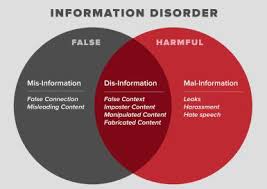

Chrisland University, Abeokuta, Nigeria
Email: jayoakinola@gmail.com
One major advantage of social media as an offshoot of the digital media is its rapid and instantaneous spread of information among users on various platforms. It is common knowledge that while a lot of information is made available on the platforms, attendant abuse through a preponderance of fabricated contents is interfering with the digital space. It has been observed that misinformation on social media has reached an alarming state, damaging societies and democratic institutions (Allcott, 2018; Flynn et al. 2017; Lazer et al. 2018). Although there have been some efforts at reversing this trend and the attendant complexities, yet these efforts appear limited. Hence, there is a need by scholars to continue this important discussion towards ameliorating users’ involvement in the broadcast of phoney online content.
Among the existing works, copious signifiers for the identification of bogus online content have also been attempted. Most of these voices in academia have focused on the (ab)use of content production for digital media, especially the social platforms. Oftentimes, many of them have dwelt mainly on the stylistics perspectives thus leaving out the discourse and the participatory aspect of such for knowledge (mis)reproduction (see Rashkin, Choi, et al, 2017; Reimink, 2018) . In other words, the interchange of phoney content has not been giving appropriate attention as it should in the social sphere. A few existing attempts on this topic interestingly belong to various blogging websites and other unconventional media. As a result, there is a serious need for robust scholarly contributions from “the gowns”, especially digital humanities researcher towards curbing misinformation in “the towns”.
This study, in line with the deconstructive criticism and pragmatics school of thought, and a corpus of over 50,000 words collected from WhatsApp and Facebook, serves as a modest contribution for information on various means of identifying how people socially interact and the complexities of the (un)conscious spread of fabricated contents. For the preliminary results presented, Voyant and AntCon digital tools were utilised to foreground the linguistic identifiers of fabricated contents being passed across from a social media platform user to another.
The study acknowledges the fact that identifying fake contents in online interaction is a complex endeavour. However, some clues are provided for identifying fabricated online contents, as well as how they are shaped. It is discovered that political, religious and economic (finance, veiled advertisement) discourses form the major themes in the Nigerian social media interaction. Politics and religion are two predominant and recurring themes among the fabricated viral contents among the users being studied. Name-dropping of imaginary but (non-) existing government agency or establishment, religious leaders, places and individuals was the major linguistic validating strategies employed. Pragmatic acts utilised include persuading, appealing, warning, abusing, referring, and veiling.
All these contribute mainly to the continued influencing of opinions of social media users in Africa, especially Nigeria, and help to corroborate the contents as valid thus propelling their spread. The spread of phoney online content remains one of the major complexities of the digital space in the twenty-first century Nigeria as a developing nation. The study will potentially provide a way of correctly recognising and interpreting misinforming online contents. Through this, social media users can distinguish reality from fiction, and save self and society from the spread of fear, anxiety, panic and other emotional stress.
